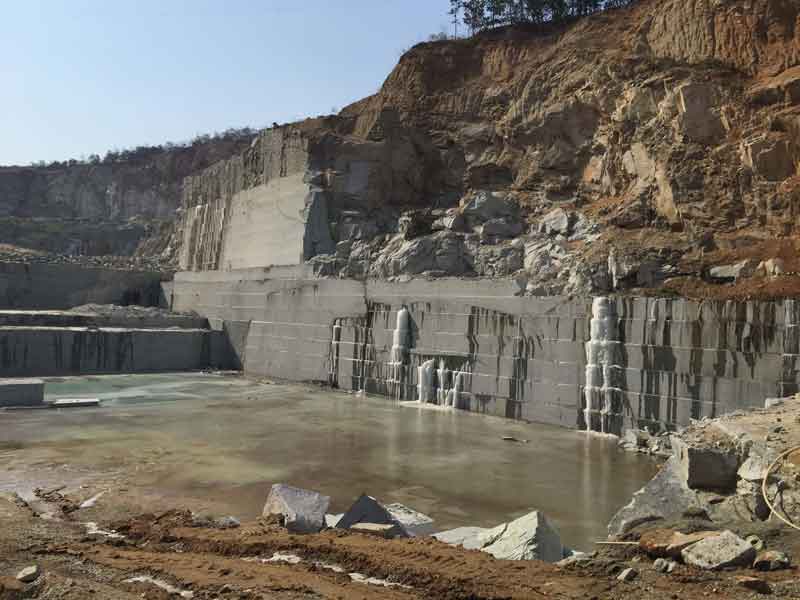Unlocking Natural Treasures: Granite Quarries in South Africa Introduced
Unlocking Natural Treasures: Granite Quarries in South Africa Introduced
Blog Article
Discovering the Rich Background and Lasting Practices of Granite Quarrying
As we stand on the precipice of discovering the elaborate tapestry of granite quarrying, a trip through time exposes not just the physical act of drawing out rock but also the social and historical value woven into the very fabric of this practice. From the ancient origins that laid the foundation for modern quarrying techniques to the lasting practices that are shaping the future of this industry, each sculpt mark on granite surface areas tells a story waiting to be discovered (granite quarries in south africa). The heritage of granite quarrying stretches far past plain extraction; it is a testament to human resourcefulness, strength, and the long-lasting allure of this majestic stone
Ancient Beginnings of Granite Quarrying
Going back to old civilizations, the method of quarrying granite has actually been an integral part of human history and building innovation. The earliest proof of granite quarrying dates back to ancient Egypt, where large pyramids and detailed sculptures were crafted from this durable stone. The Egyptians utilized primitive tools to draw out granite blocks from quarries, showcasing the significance of this product in their significant building and constructions.
Relocating onward in background, the Greeks additionally made substantial payments to the quarrying of granite. The Greeks made use of granite in numerous building wonders, such as holy places and sculptures, showing their skill in shaping and carving this hardy stone. The Romans further refined the techniques of quarrying granite, employing advanced devices like knives and hammers to essence and shape granite for their renowned structures.
Through the centuries, the practice of quarrying granite has actually advanced, with modern-day innovations improving efficiency while maintaining the classic appeal of this natural stone - granite quarries in south africa. From old worlds to contemporary home builders, the heritage of granite quarrying continues to shape our world
Advancement of Quarrying Techniques
The advancement of quarrying methods has actually been marked by a continual progression in the direction of greater performance and precision in drawing out granite. Early quarrying techniques included hand-operated labor with basic devices such as chisels, hammers, and wedges to draw out granite blocks from the planet.
In more current times, the advent of equipment revolutionized the quarrying market, making it possible for faster extraction prices and increased efficiency. Technologies such as ruby wire saws, high-pressure water jets, and pneumatic drills have actually come to be basic in contemporary quarries, permitting for accurate cutting and minimized waste. In addition, developments in computer-controlled devices and 3D modeling have actually maximized quarrying operations, bring about very little environmental effect and improved sustainability practices. As the need for granite remains to climb, the advancement of quarrying techniques remains essential to meeting market needs effectively and sustainably.
Cultural Importance of Granite
Granite holds a profound cultural significance across numerous human beings as a result of its long-lasting existence in architectural Clicking Here masterpieces and revered monoliths. From the majestic pyramids of Egypt to the intricate makings of the Angkor Wat holy place in Cambodia, granite has been a material of selection for revealing magnificence and durability in cultural heritage. In old Rome, granite columns decorated temples and public structures, signifying stamina and permanence. The social relevance of granite extends past its physical features; it symbolizes resilience, security, and eternity, making it a sign of enduring heritages and customs.

Lasting Practices in Quarrying
In the middle of the rich background of granite quarrying and its cultural importance exists an expanding emphasis on lasting methods within the industry. As ecological understanding and issues concerning source depletion have actually increased worldwide, the quarrying sector has actually increasingly welcomed sustainable methods to decrease its effect on the visit homepage environment and bordering neighborhoods.

Furthermore, reclamation and rehab of quarry sites post-extraction are integral to sustainable practices. By restoring quarried areas to a natural or advantageous state, such as creating wildlife environments or entertainment rooms, quarriers can counter the ecological footprint of their operations and contribute favorably to the neighborhood ecological community.
Heritage of Granite Quarrying
With a historic backdrop steeped in workmanship and commercial development, what withstanding impact has granite quarrying left on the landscape of modern culture? The tradition of granite quarrying transcends mere removal techniques; it has shaped building wonders, metropolitan landscapes, and cultural heritage worldwide. The durable nature of granite has actually made it a favored selection for monuments, structures, and facilities, standing as a testament to the ability and creativity of quarry workers throughout generations.
Additionally, the economic impact of granite quarrying can not be ignored. The industry remains to supply employment possibilities and drive regional economies in areas where granite extraction is widespread. It has actually also stimulated technological innovations in quarrying methods and tools, resulting in much more efficient and lasting practices.
In regards to sustainability, the legacy of granite quarrying consists of efforts to minimize environmental effects through improvement tasks and responsible resource monitoring. By stabilizing economic rate of interests with ecological stewardship, the sector strives to make sure that future generations can remain to gain from this enduring natural deposit.
Verdict

Report this page